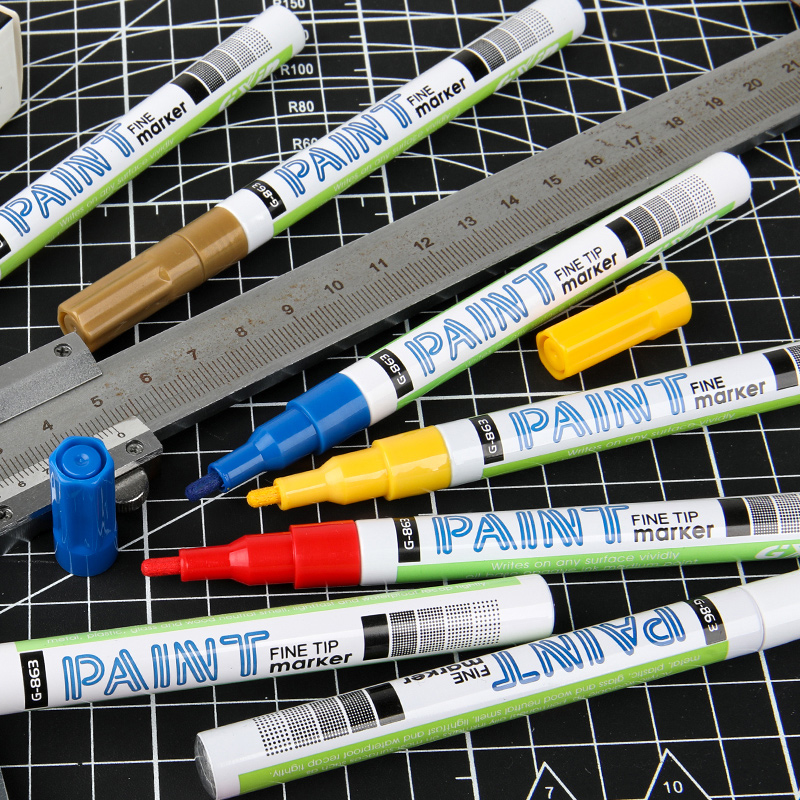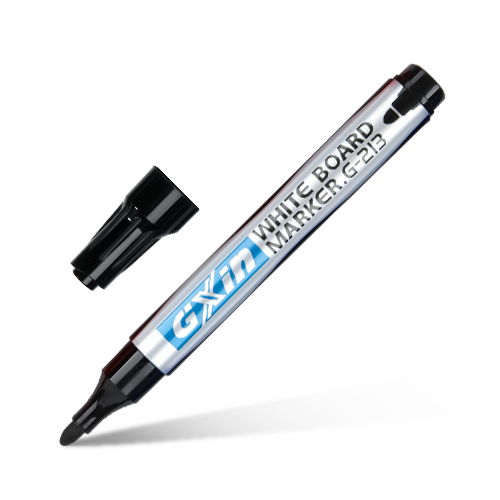
Paint markers are popular for their ability to create durable, opaque lines, but many users wonder: which surfaces do they really work best on? Because ink formulations and surface textures vary widely, choosing the right marker for the right material can make all the difference.
This guide explores how paint markers interact with common surfaces, from metal to fabric, and what to consider for the best results.
Metal Surfaces
DIn manufacturing plants, warehouses, and construction sites, paint markers are often used for Paint markers are widely used for marking steel, aluminum, and other metals.
Tips: Clean off grease or dust first for maximum adhesion.
Why It Works: Oil-based and acrylic inks adhere strongly to non-porous, smooth metal surfaces.
Applications: Industrial labeling, automotive parts, construction beams, and outdoor metal signage.
Glass and Ceramics
Glass is often seen as a challenging surface, but paint markers excel here.
Tips: Acrylic markers work especially well and can be sealed for permanent designs.
Why It Works: Thick pigments sit on the slick surface, providing high opacity and bold color.
Applications: Window art, decorative glassware, ceramic mugs, and glass labeling.
Wood Surfaces
Description:
Wood is porous, which makes it highly compatible with paint markers.
Tips: Smooth, sanded wood gives cleaner lines than rough, untreated wood.
Why It Works: Pigmented ink soaks slightly into the surface, creating strong, long-lasting marks.
Applications: DIY furniture projects, craft decorations, wooden signs, and construction labeling.
Plastic and Rubber
Smooth plastic and rubber can be difficult for standard markers, but paint markers provide a solution.
Tips: Choose permanent, quick-dry ink for better performance.mergency response, outdoor construction, and maintenance roles.
Why It Works: Oil-based ink clings to slick synthetic materials where water-based inks might smear.
Applications: Tool handles, storage bins, automotive parts, and outdoor equipment.
Fabric and Leather
Paint markers are increasingly popular for personalizing clothing and accessories.
- Why It Works: Fabric absorbs acrylic or water-based paint, while leather holds oil-based pigment.
- Applications: Custom shoes, denim jackets, handbags, and sports gear.
- Tips: Heat-set or seal designs to increase wash and wear resistance.
Conclusion
Paint markers are not just for paper or cardboard. With the right ink type and preparation, they work effectively on metal, glass, wood, plastic, rubber, fabric, and more. Understanding surface compatibility ensures long-lasting, high-quality results whether you’re in an industrial workshop or a creative studio.





